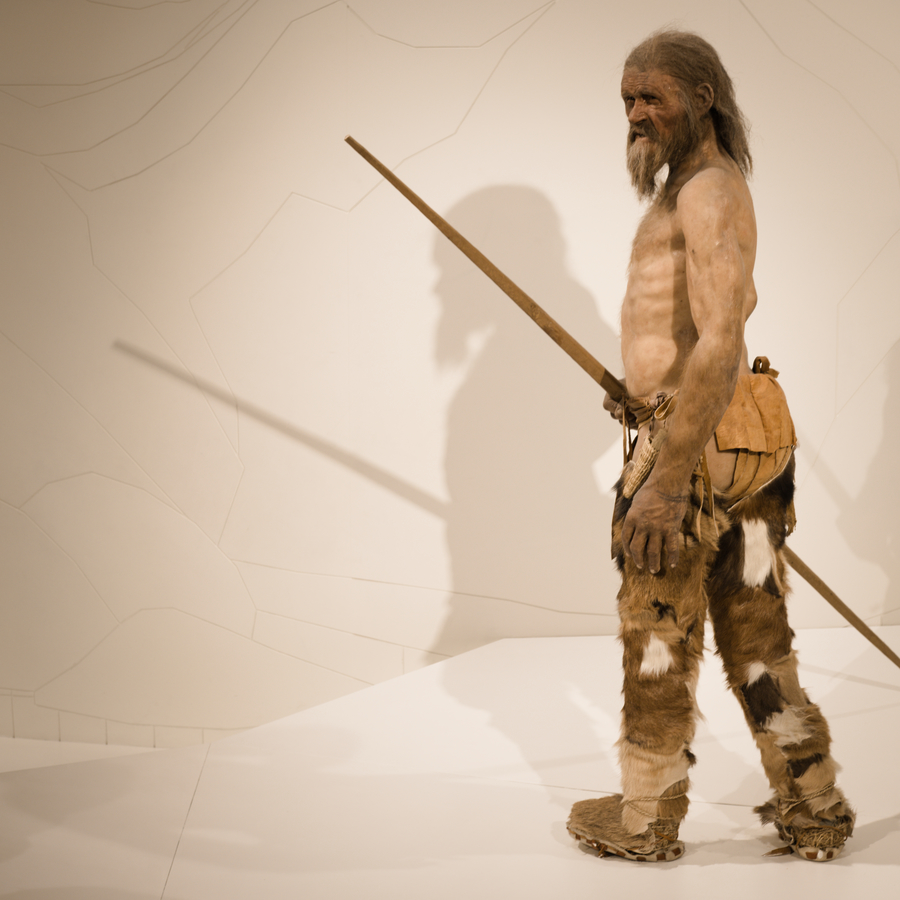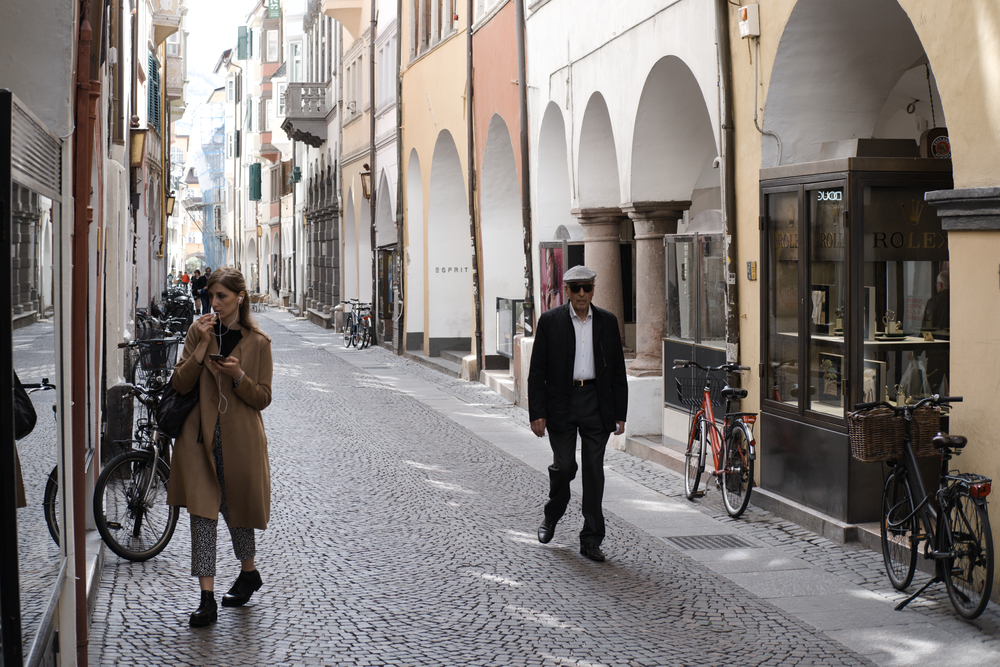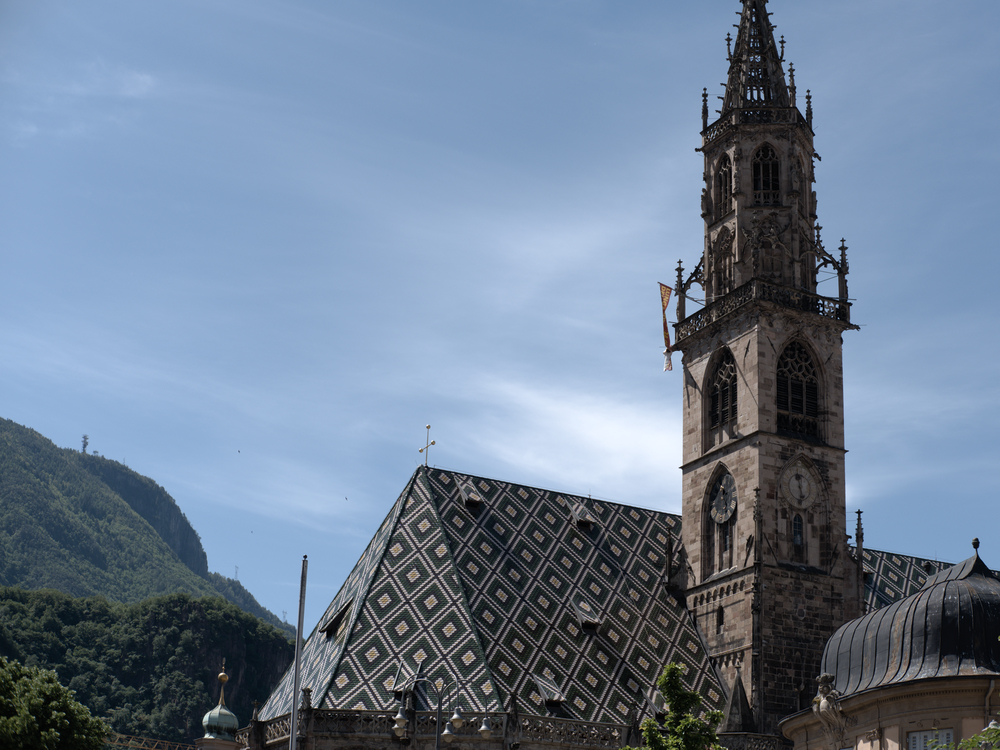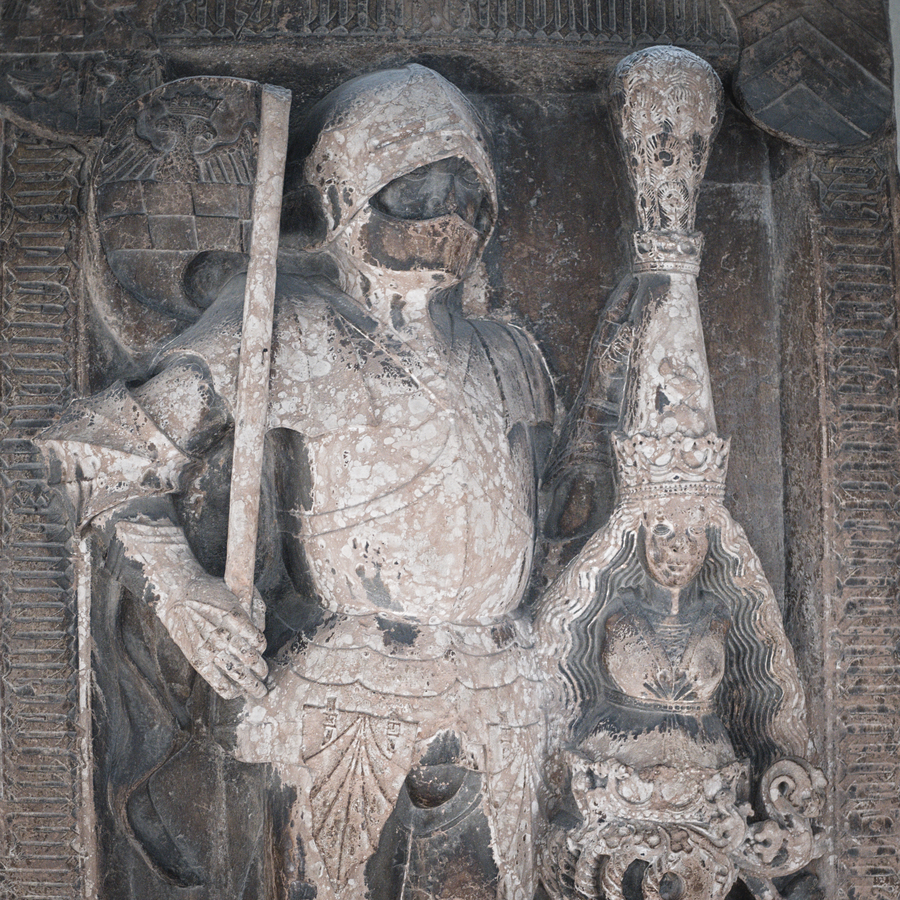Via Romea Germanica VII
Bolzano, Italy

Otzi, the Iceman of Bolzano, Italy.
“Stand back,” I shouted.
The neolithic hunter fixed us with his hostile eyes. He brandished a threatening spear.
Mary was mesmerized. She walked closer.
“No!” I gargled…
Welcome to the Peripatetic Historian's multi-part series about hiking the Via Romea Germanica.
If you have stumbled across this installment by accident or a fortuitous Google search, and have no idea what is happening, you might prefer to begin at the start of the series, here: Introduction to the Via Romea Germanica
Otherwise, let's return to our story, already in progress.
After two particularly difficult days of lung-gripping ascents and knee-straining descents, it was gratifying to reach our first planned rest day in Bolzano, Italy. We spent an extra night here, washing sweat-stained clothing, resting weary legs, and visiting a few of the major attractions of this Sud Tirol city.
Bolzano is the largest city in the Sud Tirol. It perches at the southern edge of the region, and I heard more Italian speakers as we walked through the evening streets. This trend will accelerate as we continue south, and soon, the only German we will hear, will be from other travelers.
The city has its roots in a Roman past. The region was conquered by the Roman general Nero Claudius Drusus, the adopted son of the Emperor Augustus and brother of the second Roman Emperor, Tiberius. Drusus founded a Roman town on the site, named Pons Drusi. After the fall of the western Roman empire in 476, Germanic tribal groups seized control of the region and left a cultural influence that endures to this day.
The Bishops of Trent (about whom I shall have more to say over the next few episodes) were given dominion over the region in 1027. At the time, northern Italy was under the control of the German Holy Roman Emperors.
In 1180, the Bishop of Trent founded the city of Bolzano. A far-sighted man, Bishop Salomon (1177–1183), knew that the future of Bolzano hinged on good shopping opportunities. Therefore, the first street in the revivified city was a long, straight market street, which later became known as the Via dei Portici (Street of the Porticos).

Via dei portici, Bolzano, Italy
This is one of the most amazing commercial spaces I have ever encountered. The street, the oldest in Bolzano, is 300 meters long. It is narrow and pedestrianized. On both sides of the street are porticoes, covered sidewalks flanked by supporting columns. Narrow stores, a few meters wide, but up to fifty meters deep, intersect with the porticos. Today the Via dei Portici is an amazing shopping mall, but what is truly stunning, is that it was designed to be like this, 800 years ago. The buildings that now house sports shops, swimwear, and high end fashion boutiques once were occupied by butchers, bakers, and other medieval shops. The rest of the city developed around this innovative commercial center.

Serving fine diners for 800 years. Via dei portici, Bolzano, Italy
Otzi, the mummified Neolithic shepherd is Bolzano’s most famous attraction. Discovered in 1991, Otzi takes his name from the place where he was discovered (the Otzal Alps). A pair of German hikers stumbled across his mummified body, which had spend thousands of years encased in ice. Scientists believe that Otzi was born around the year 3345 BC, near the village of Feldthurn/Velturno, which we passed a couple of days ago.
Otzi appears to have been murdered. He was shot in the back, and the arrowhead severed an artery. He bled to death in the mountains. Shortly thereafter, his body was entombed in snow, which freeze-dried him. Today he is the star attraction of the South Tyrol Museum of Archaeology in Bolzano, where he rests in an environmentally-regulated crypt. His tomb emulates the conditions that maintained him for so long: temperature at -6C, and a near 100% humidity level. The containment floor is equipped with backup generators in case of a power outage, and should the generators fail, a local hospital also has a room designed for him.

The Duomo. Bolzano, Italy.
After our encounter with the Neolithic, Mary and I drifted down to the Duomo and toured the church. It is a lovely cathedral that in its grey stonework, reminds me of a British house of worship. One of the things that caught our attention was the tombstone of Count Gugliemo III who died, on May 22 (my birthday) 1480 in Salorno, while he was on his way back from a pilgrimage to Rome. In 1482, his remains were brought to Bolzano and interred in the cathedral.

The tomb of Count Gugliemo III, Pilgrim to Rome.
This was hitting a little too close to home for my peace of mind. Like the Count, we were enmeshed in a pilgrimage to Rome. And the fact that he died on my birthday seemed rather unsettling. I stared at the weathered tomb of my spiritual predecessor. Was he trying to tell me something?
We waited out the heat of the noonday sun in our apartment, and then, in the late afternoon, did what we could have done yesterday, rode the cable car up to (and back down from) Soprabolzano.

Riding the cable car to Soprabolzano.
After an apertivo in the cool mountain air, we descended to Bolzano and prepared to resume our journey to Rome tomorrow.
Today's distance: 0 KM; Total distance: 113.76 KM
If you are enjoying this series, why not subscribe to Richard's monthly newsletter, What's New in Old News? The Peripatetic Historian is on the road, roaming the world and compiling fresh adventures. Don't miss out. Click here to join the legions of above-average readers who have already subscribed.